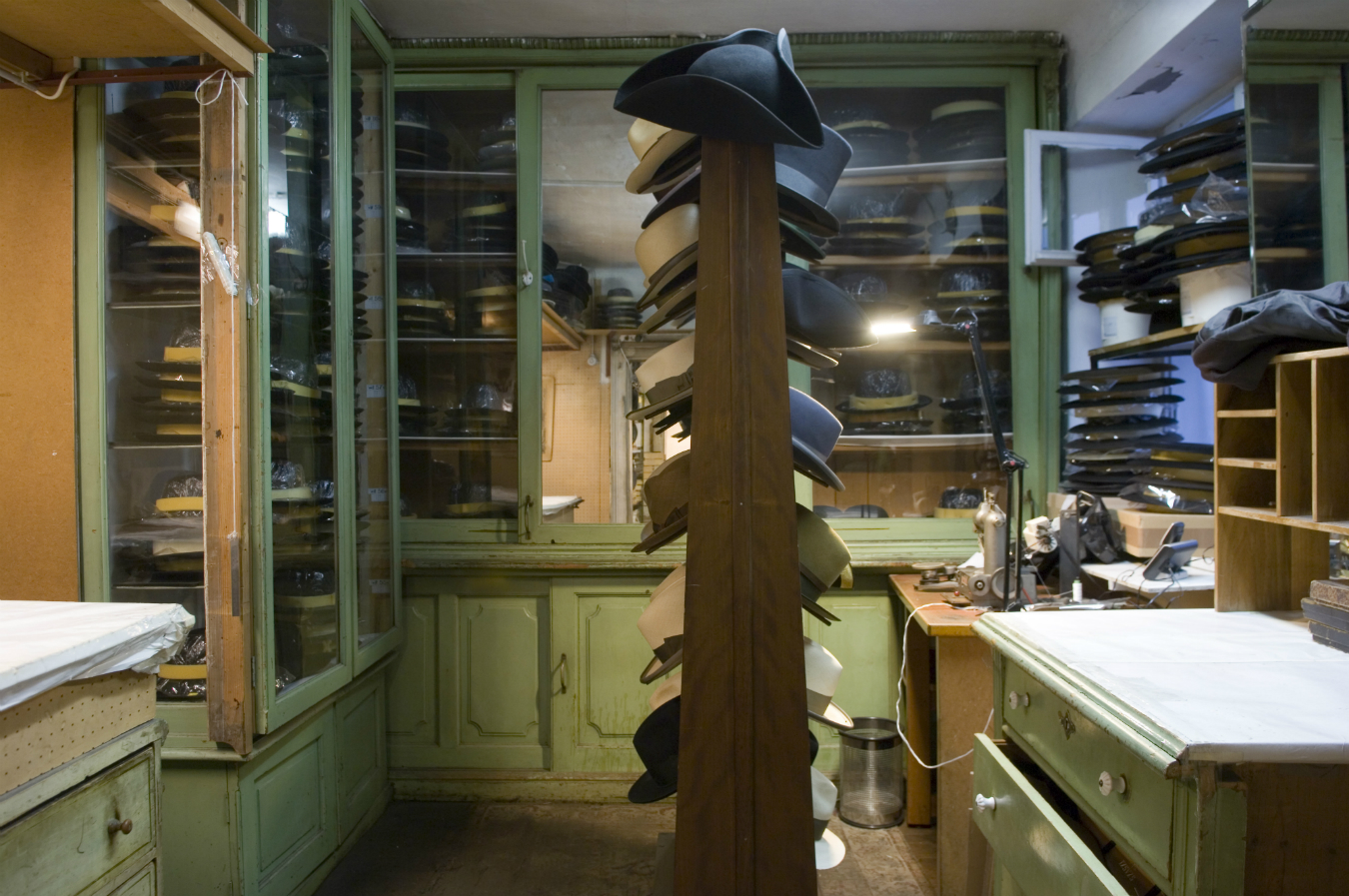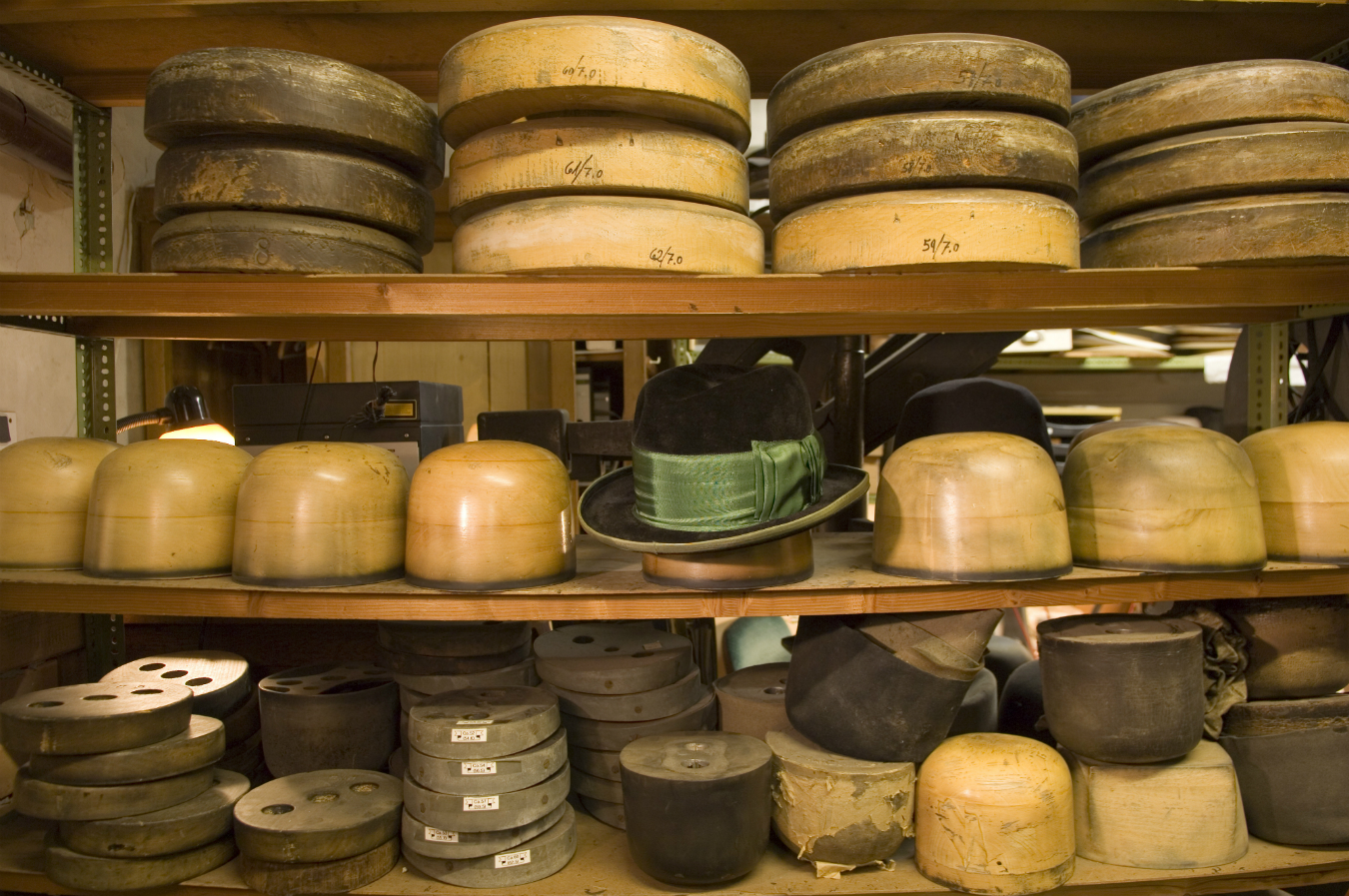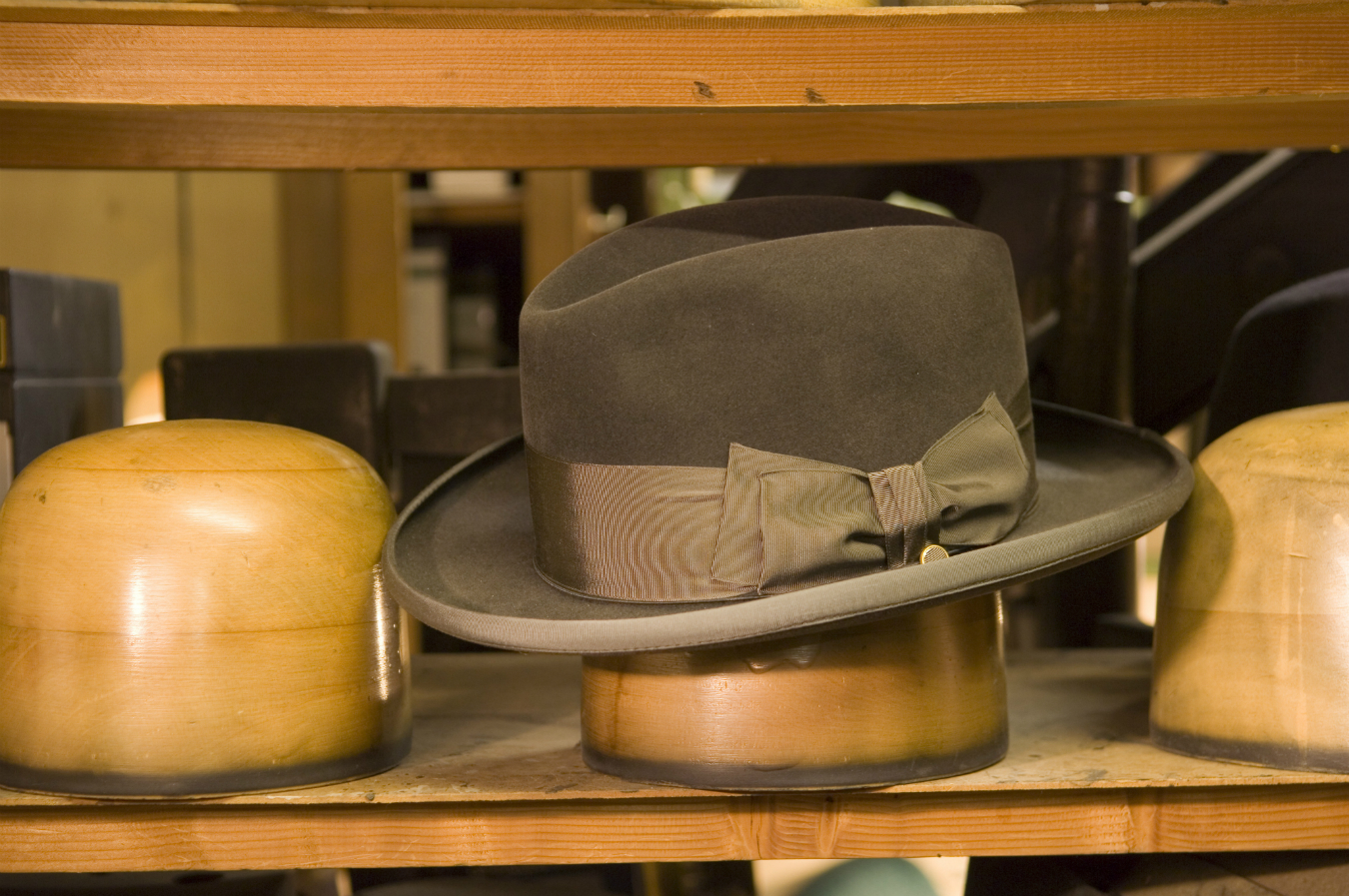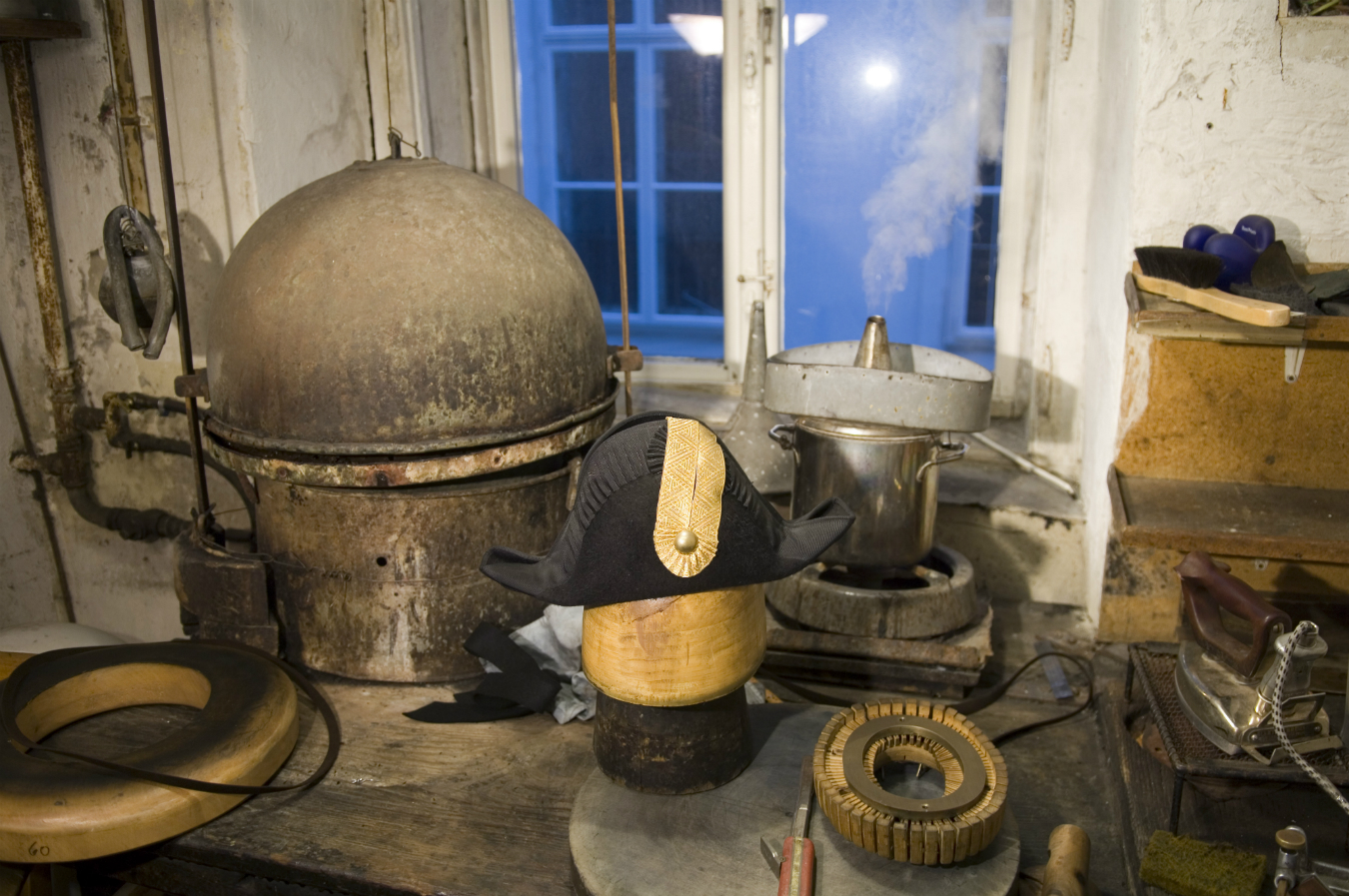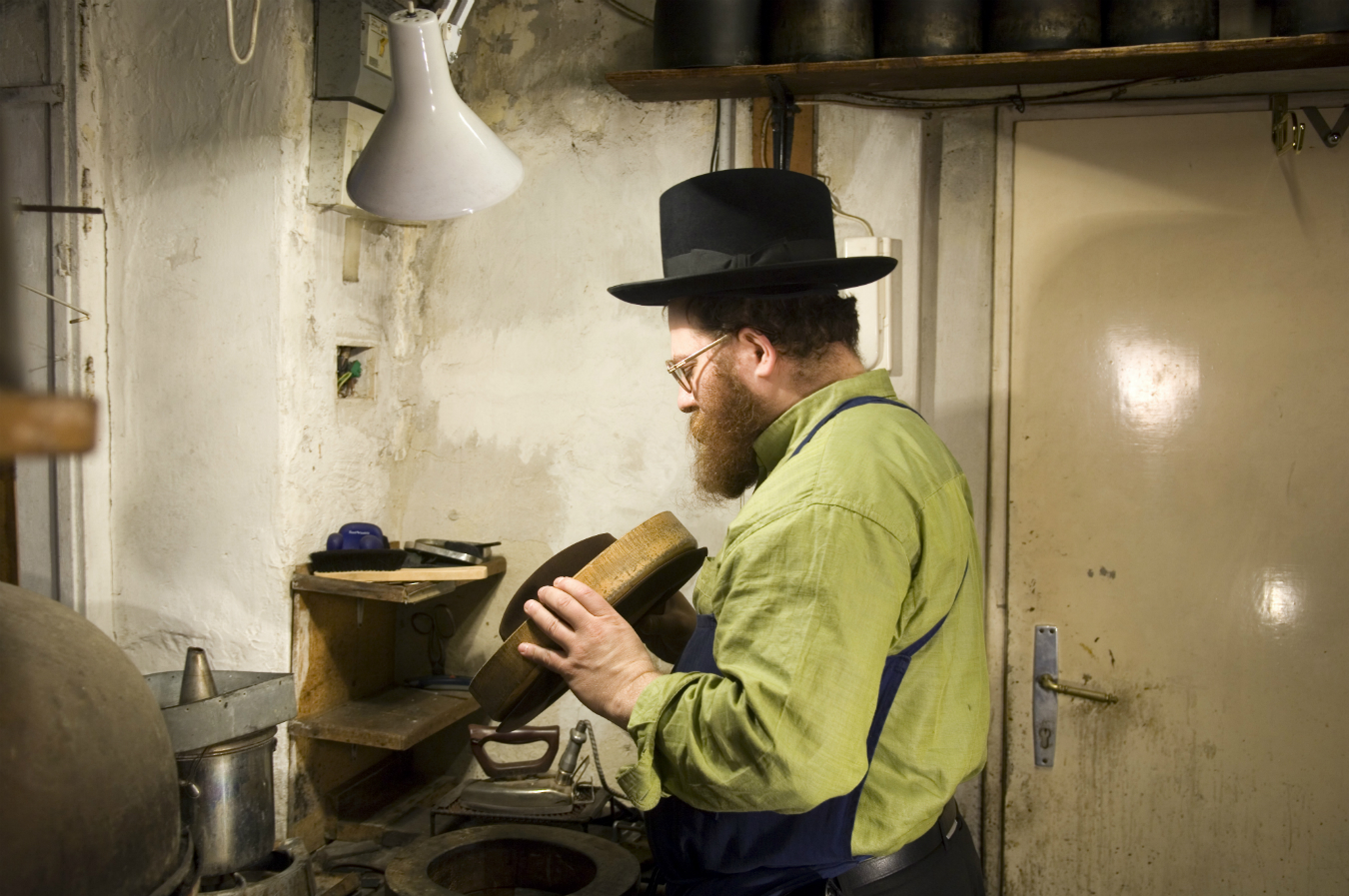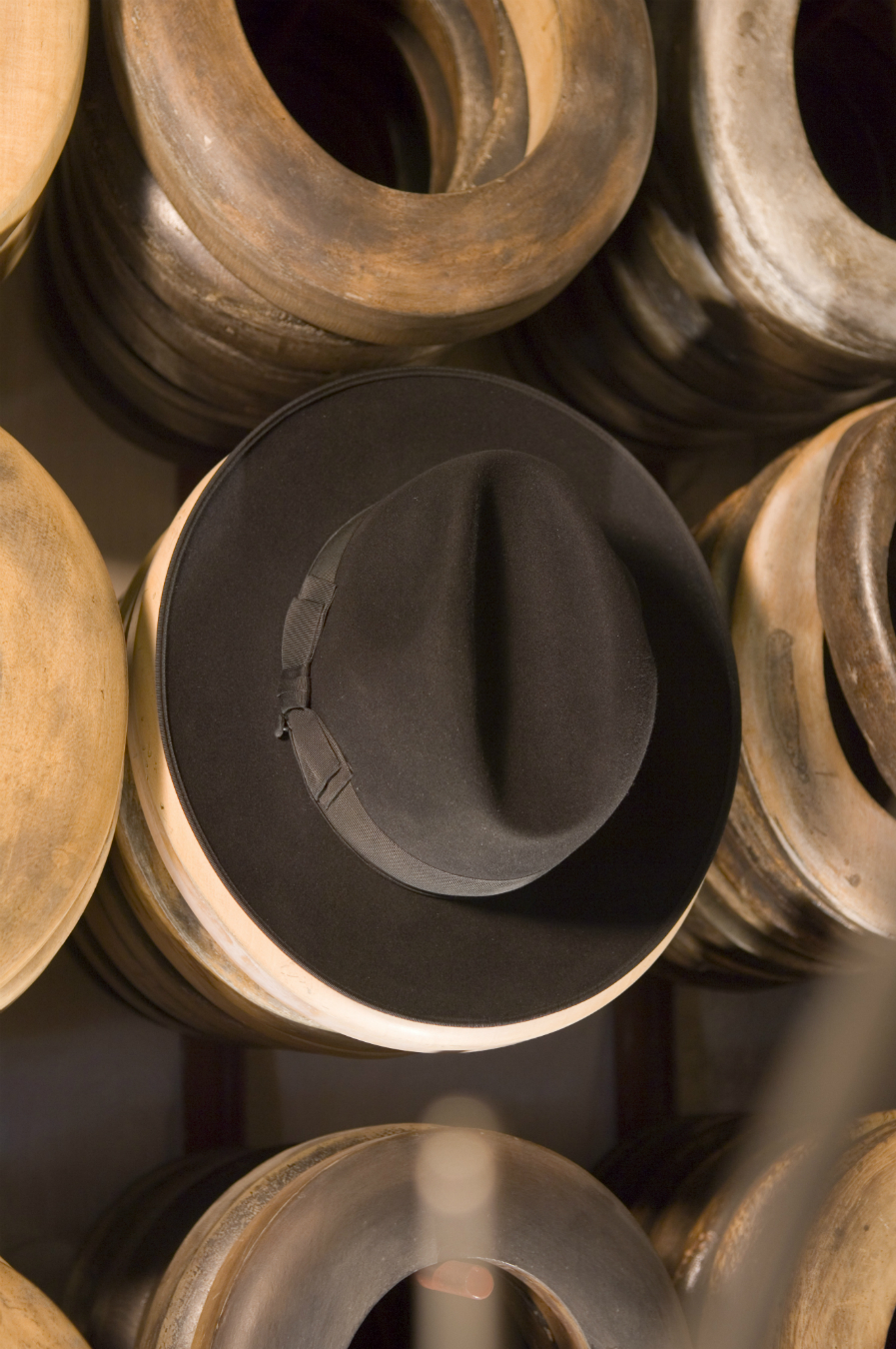Like many young men, I grew up wearing baseball caps and knitted toques; at age 19, I got adventurous and donned my first bowler, which was when the game changed. I have had great admiration for a well-made hat ever since. On a trip to Vienna, however, I learned to truly appreciate the intricacies of fine hat craftsmanship.
While on a morning stroll, I happened to see a Homburg perfectly placed in a simple glass cabinet. Below it, a thin white arrow pointed me through an unmarked door, down a naturally-lit hallway, up a set of crumbling stairs, and, finally, to a faded sign. I jiggled the handle, anticipating the curiosities that would be revealed on the other side, when I discovered that the door was locked. Determined, I returned a few hours later, and that same door swung open, allowing me to enter into the wonderful world of Szaszi Hats.
The shop, established in 1858, is a labyrinth of shelves, each adorned with various shorn felts, wooden shapes, cast iron forms, and colourful ribbons. The proprietor, Master Shmuel Shapira, wore his smile with the same grace as he wore his finely constructed bowler. Shapira, who was born in Jerusalem but moved to Vienna over two decades ago, had never imagined a career in hat-making. Rather, he stumbled upon the profession after being sent to Szaszi Hats to get one of his made over and cleaned. It was there that he fell in love with the workshop and began learning the trade from Master Caletka, who had been searching for years for a gifted mentee. When a stroke left Caletka incapacitated, the shop was handed down to Shapira.
We talked about careers, travel, art—all without even a mention of hats. Then, almost as if we both recognized a bond had been established, Shapira said, “Now I better understand what style of hat I would build for you!” As with many things, communication is key. Although I wasn’t in the market, he was happy to show me a selection of beautiful prêt-à-porter hats, and haute couture versions that were even more luxurious.
He explained to me the difference between his work and that of larger factories. Master Shapira uses machines for parts of the construction, but it’s the hand detailing that sets him apart. For instance, he will shellac, shape, hand press, and lightly sandpaper the hat numerous times until perfection is achieved. The ribbon that wraps around the crown is steamed and pressed together with a continuous pinching motion, a process that takes weeks until the material holds its new form.
“A hat, more than a suit and tie, or even a pair of shoes, is the sign of a well-dressed gentleman,” Shapira told me. And when a shop has serviced doctors, professors, and ambassadors for nearly 160 years, it is hard to argue the wisdom. I thanked Shapira profusely before spilling back onto the Viennese streets, smiling and thankful. I vowed, upon my next return, to reconnect with the master hatter and invest in a piece of history.

